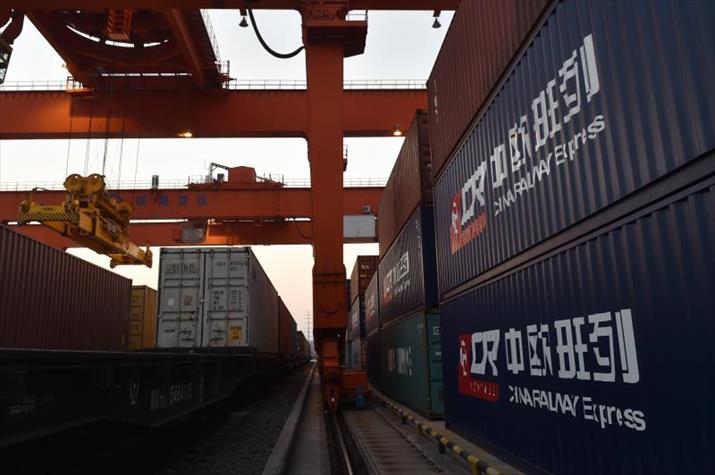|
||||||||||
| Home Nation World Business Opinion Lifestyle ChinAfrica Multimedia Columnists Documents Special Reports |
|
||||||||||
| Home Nation World Business Opinion Lifestyle ChinAfrica Multimedia Columnists Documents Special Reports |
| Current Cover Story |
| Development Down the Line |
| China's mutually beneficial Belt and Road Initiative building infrastructures to help economic development and people-to-people exchanges |
| By Hou Weili | VOL. 9 May 2017 ·2017-04-28 |
Changing Africa

The under-construction information expressway project built by Chinese enterprises with African counterparts will in future make high-speed Internet available to Africans across the continent. In addition, infrastructure projects like construction of railways and industrial parks facilitate transportation across borders on the continent while bringing in investment and creating jobs.
An example of this is Africa's first modern international electrified railway connecting the capitals of Ethiopia and Djibouti. The project shortened travel time from seven days to 10 hours and brought jobs and technologies to local people. "During the construction, nearly 40,000 locals were employed. And 2,000 more got maintenance and operation jobs after the railway was put into operation in October 2016," said Fu Xun, Project Manager from China Railway Group Ltd. who worked on the project. Besides, more than 300 Ethiopians got financial support from Chinese businesses and government come to China for learning skills and expertise on railway engineering, driving and maintenance, he added.
"Railway construction is only a start. With traffic connectivity, cities, ports and industrial parks will be linked, promoting regional integration and bringing in considerable investments and opportunities for economic development," said Liu Xianfa, Chinese Ambassador to Kenya.
Funding streams
Financial support is vital to sustainably promote infrastructure construction under the Belt and Road Initiative. A report by the Asian Development Bank (ADB) released in late February predicted that it required an investment of $26 trillion on infrastructure from 2016 to 2030 to maintain the current economic growth rate among Asian emerging economies. Breaking it down to annual investment, the figure stands at $1.7 trillion. However, the current actual annual investment in this area in the region is only around $800 billion.
Though there are many platforms providing financial support including ADB, Asian Infrastructure Investment Bank, the Silk Road Fund and BRICS Development Bank, the funding gap is still large. Filling this gap calls for active participation of private funding.
Yang Guangpu, researcher with the Development Research Center of the State Council, suggests public-private partnerships (PPP) should play an active role in mobilizing resources to enhance connectivity under the Belt and Road Initiative. "As an innovative approach of supplying public goods and services, PPP helps alleviate government's financial pressure and enhance investment efficiency," said Yang.
The involvement of Chinese private funding was first seen on the African continent. In January 2017, the Silkroad International Bank launched its services in Djibouti. Funded by Chinese enterprises such as IZP Group, the bank is the first Chinese-funded enterprise obtaining a banking license in Africa. It offers various financial services in Djibouti including issuing bank cards, providing cross-border payments and international bank cards collection as well as supporting Chinese enterprises' projects in Africa.
"The opening of the bank was the latest example of China's long-term support for infrastructure development in the nation," said Ilyas Moussa Dawaleh, Djibouti's Minister of Economy and Finance.
| Previous1 |
| About Us | Contact Us | Advertise with Us | Subscribe |
| Copyright Beijing Review All rights reserved 京ICP备08005356号-5 京公网安备110102005860号 |